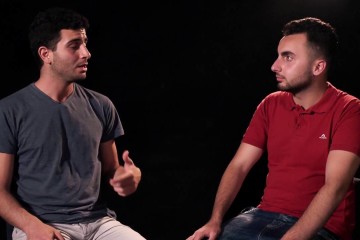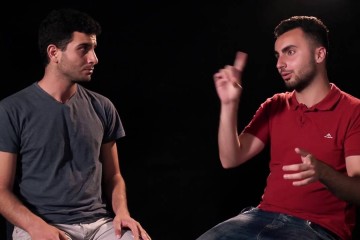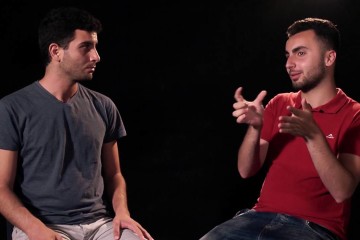Yahya Mahamed goes to Barta’a to discover a village of two halves. The Green Line separating Israel and the Palestinian Authority runs right through the middle.
Transcription:
Behind me you see a section of the security barrier that was built by Israel back in 2002. It was built between Israel and the Palestinian Authority in the wake of the second intifada. But now, I want to show you what life looks like without walls. Salaam, my name is Yahya Mahamed I’m an Israeli Arab and this is Barta’a. First, some history. In 1949 on the island of Rhodes, a ceasefire agreement was signed between Israel and Jordan. A line was drawn with a green pen which became known as the Green Line, marking the division between Israel and Jordan. This line ran through the middle of Barta’a. This side of the street was Israel, and that side of the street was Jordan. For seven years the city remained united. But in 1956 the Jordanians dug this ditch to separate the two halves of Barta’a. In 1967 Israel took control of the West Bank from Jordan. And Barta’a was reunited. No more separation. Then in 1993 the Oslo Agreements gave the Palestinian Authority control over half of Barta’a. Once again the village became two halves. The people born on one side of the street are residents of the Palestinian Authority. Those who are born on the other side of the street are Israeli citizens. Between 2000 and 2003, in the wake of the suicide bombings, Israel built the security barrier. The people of Barta’a realised that in order for them to stay together they have to remain peaceful. And as you can see, there is no wall here in Barta’a. There is no need for the security barrier here. So the families of Barta’a are able to live, work, and celebrate together. We asked some people what is it like to be living right on the Green Line. Sometimes we have good days and sometimes we have bad days The market is completely dependent on the security situation. People live their lives happily and comfortably there are no problems at all. No problems at all? No problems at all. So it makes you wonder what will happen to Barta’a when there is a peace agreement. Will peace lead to division? Or can Barta’a serve as a model of co-existence for the entire region?




